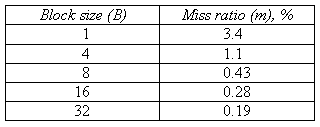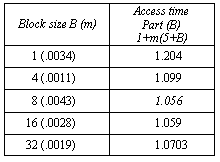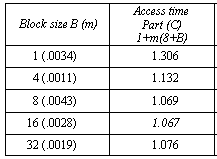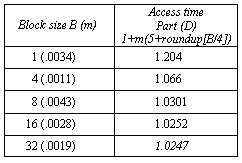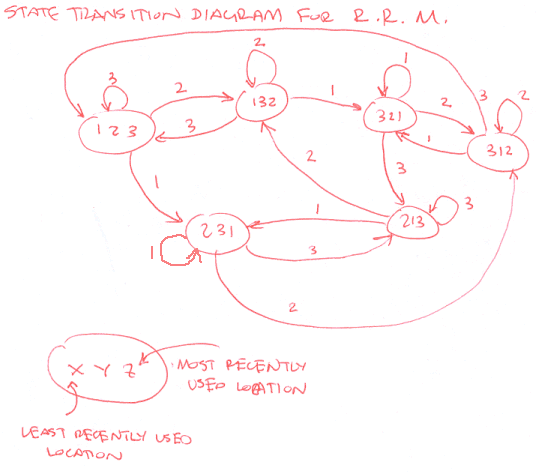Here's what happens:
access 100: miss; cache contains 100, ---, ---
access 200: miss; cache contains 200, 100, ---
access 104: miss; cache contains 104, 200, 100
access 204: miss; cache contains 204, 104, 200
access 200: hit; cache contains 200, 204, 104
access 100: miss; cache contains 100, 200, 204
access 200: hit; cache contains 200, 100, 204
access 104: miss; cache contains 104, 200, 100
access 204: miss; cache contains 204, 104, 200
access 200: hit; cache contains 200, 204, 104
...
So in the steady state, location 200 stays in the cache and all other
locations get replaced. So the hit rate is 2/5 or 40%.
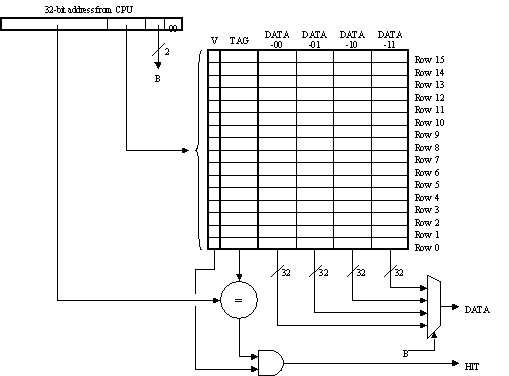 The diagram above illustrates a blocked, direct-mapped cache for a
computer that uses 32-bit data words and 32-bit byte addresses.
The diagram above illustrates a blocked, direct-mapped cache for a
computer that uses 32-bit data words and 32-bit byte addresses.
 What is the maximum number words of data from main memory that can be
stored in the cache at any one time?
What is the maximum number words of data from main memory that can be
stored in the cache at any one time?
 How many bits of the address are used to select which line of the
cache is accessed?
How many bits of the address are used to select which line of the
cache is accessed?
 How many bits wide is the tag field?
How many bits wide is the tag field?
 Briefly explain the purpose of the one-bit V field associated with each cache line.
Briefly explain the purpose of the one-bit V field associated with each cache line.
 Assume that memory location 0x2045C was present in the cache. Using
the row and column labels from the figure, in what cache location(s)
could we find the data from that memory location? What would the
value(s) of the tag field(s) have to be for the cache row(s) in which
the data appears?
Assume that memory location 0x2045C was present in the cache. Using
the row and column labels from the figure, in what cache location(s)
could we find the data from that memory location? What would the
value(s) of the tag field(s) have to be for the cache row(s) in which
the data appears?
 Can data from locations 0x12368 and 0x322FF8 be present in the cache
at the same time? What about data from locations 0x2536038 and
0x1034? Explain.
Can data from locations 0x12368 and 0x322FF8 be present in the cache
at the same time? What about data from locations 0x2536038 and
0x1034? Explain.
 When an access causes a cache miss, how many words need to be fetched
from memory to fill the appropriate cache location(s) and satisfy the
request?
When an access causes a cache miss, how many words need to be fetched
from memory to fill the appropriate cache location(s) and satisfy the
request?
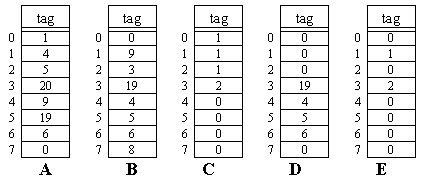
 What is the memory requirement for data, tag and status bits of the cache?
What is the memory requirement for data, tag and status bits of the cache?